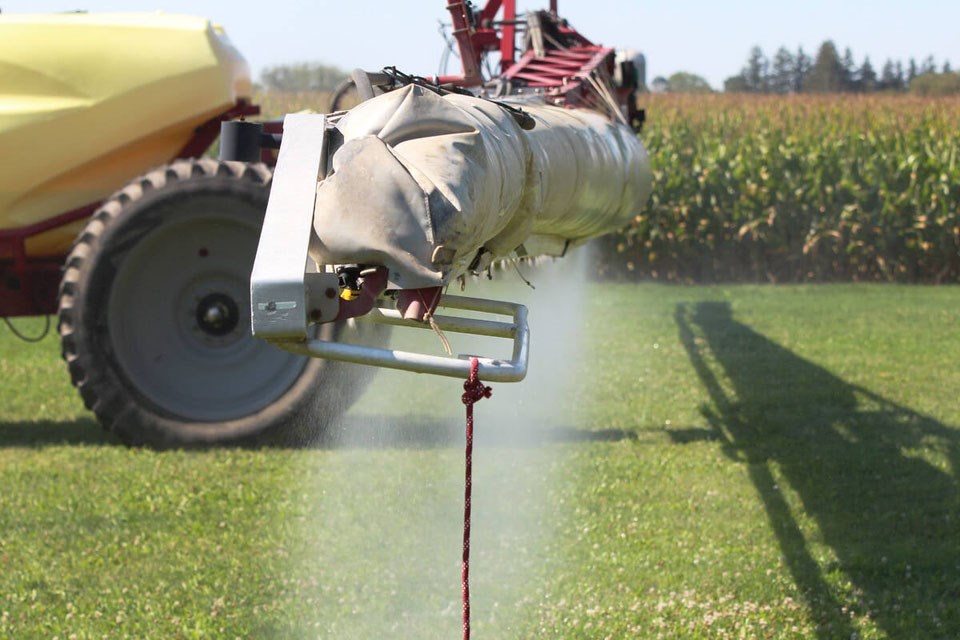SASKATOON — Many environmental questions swirl around the agriculture industry.
For Stuart Smyth from the University of Saskatchewan, getting those answers out to the policy-makers in Canada in a more effective manner is key to the industry’s future.
As part of his presentation at the recent Farming Smarter Conference and Trade Show in Lethbridge, Smyth praised all the presentations that were made over the two days of the show, including agricultural trade policies, weed control, potato research, soil conservation, beneficial insects, maximizing barley yields, remote sensing and seeking innovation.
However, looming concerns such as talk of a possible glyphosate ban and tight time lines for national carbon emission goals have convinced Smyth that more must be done to fight agriculture’s bad rap.
“Agriculture in the Prairies is more sustainable than anywhere in the world, but it has to be driven by the economics. (Agriculture) was not done by a government or governments regulating agriculture; it was done by market incentives. What was the most profitable thing for your farm?” he said.
“That is why farmers have adopted technologies like zero-till equipment or mid-till equipment or herbicide-tolerant crop technologies. All of these things were driven by the economics and the profitability of your operations. That cannot be forgotten. That has to be the fundamental baseline of all the discussion around the changes in agriculture practices.”
Smyth was asked during his presentation’s question period about the possibility of losing glyphosate in crop production, despite developing a world-class food production system around the chemical, and what the future would look like without it.
Glyphosate-based herbicides are the most widely used pesticides on the planet and accounted for 58 per cent of pesticides used in Canadian agriculture sector in 2017.
However, .
“The big challenge is there hasn’t been a new mode of action commercialized in 20 years, roughly. The loss of glyphosate would seriously undermine agriculture’s ability to be sustainable producers. We are running at peak weed control efficiency. If we lose glyphosate, we are going to take a step down and be sup-optimal in our ability to control weeds,” said Smyth.
“Losing glyphosate to control weeds across our crop technologies is going to have a yield impact. There was a paper done about three years ago by an economist out of England, and he estimated that if globally glyphosate was removed, it would lead to about a $6.5 billion lesser revenue for farmers across the world. I think as an ag industry, we have to do a better job of talking about the safety and efficacy of glyphosate. Europe is going to ban copper sulfate? Copper sulfate is a natural organic chemical, but it has four times the environmental impact that glyphosate has.”
In this case, Smyth sees social media as a necessary evil, even though old-school farmers may have their doubts and aversions to it.
The Centre of Food Integrity puts out an annual report on food trust. Farmers have scored more than 80 per cent in trust for the last decade, Smyth said.
However, that trust drops to about 33 per cent when people are asked about their confidence level in specific practices on the farm, such as chemical use and animal welfare.
“Why is it that they trust you as a whole, but when they ask specifically about the things you do on your farms, that trust falls by over 50 per cent? I think that’s because the voice of agriculture is not getting out,” said Smyth.
The younger generations must take the lead on this, he added.
“We don’t want someone like me on TikTok or Instagram, but you young farmers are the ones who are going to be able to interact. Here’s a suggestion: when you are doing weed control, leave a small portion of your field and let it go for two or three years. Show what weeds look like in that tiny corner of your field from one year to the next, saying this is what fields would look like if we didn’t have efficient weed control. If you can look at a picture and not see what is being grown because there’s so many weeds, then the public will start to understand.”
New provisions were added to the Competition Act last June that explicitly target greenwashing, which is exaggerated or false claims about a product’s environmental benefits.
Businesses are now required to have testing or substantiation to support certain environmental claims. Given the mistrust some have on social media, someone in the audience asked how one could effectively wade through that when delivering a unified message.
“I actually think it (Competition Act/greenwashing) is a fantastic opportunity for agriculture because we can go after Greenpeace, and we can go after the David Suzuki Foundation and all these environmental organizations who are lying about pesticide use, fertilizer use, genetically modified crops. All that information is going to have to come off their websites, and trust me, the first day we are allowed to make submissions, I’m coming after them.”
Smyth looked to branding as another effective tool for messaging in packaging.
“We could right now put on a package of white bread, ‘this loaf of bread sequestered 25 grams of carbon using modern farming practices’ that include innovative genetics, fertilizer and pesticide inputs,” said Smyth.
“Is that a branding that agriculture should be pursuing? We could put that on pasta, we could put that on beef that this beef sequestered so many grams of carbon through the grass that is consumed. Canadians want to buy sustainable products, and now more than ever they want to be buy sustainable Canadian products.”
Part of that messaging also includes being powered by as much credible data as possible. As the Research Chair in Agri-Food Innovation and Sustainability Enhancement at the U of S, Smyth highlighted a survey of farmers he is conducting to collect crop rotation data from 2004-06 to 2020-24.
“The most important thing with the data you are sharing is that I can use this and develop journal articles in peer-reviewed publications that your industry, your commodity groups, the companies that are providing your technology can then use all this information to advocate and lobby your policy makers, to better inform policy makers about the sustainability impacts and improvements within Prairie agriculture.”
Related Coverage




